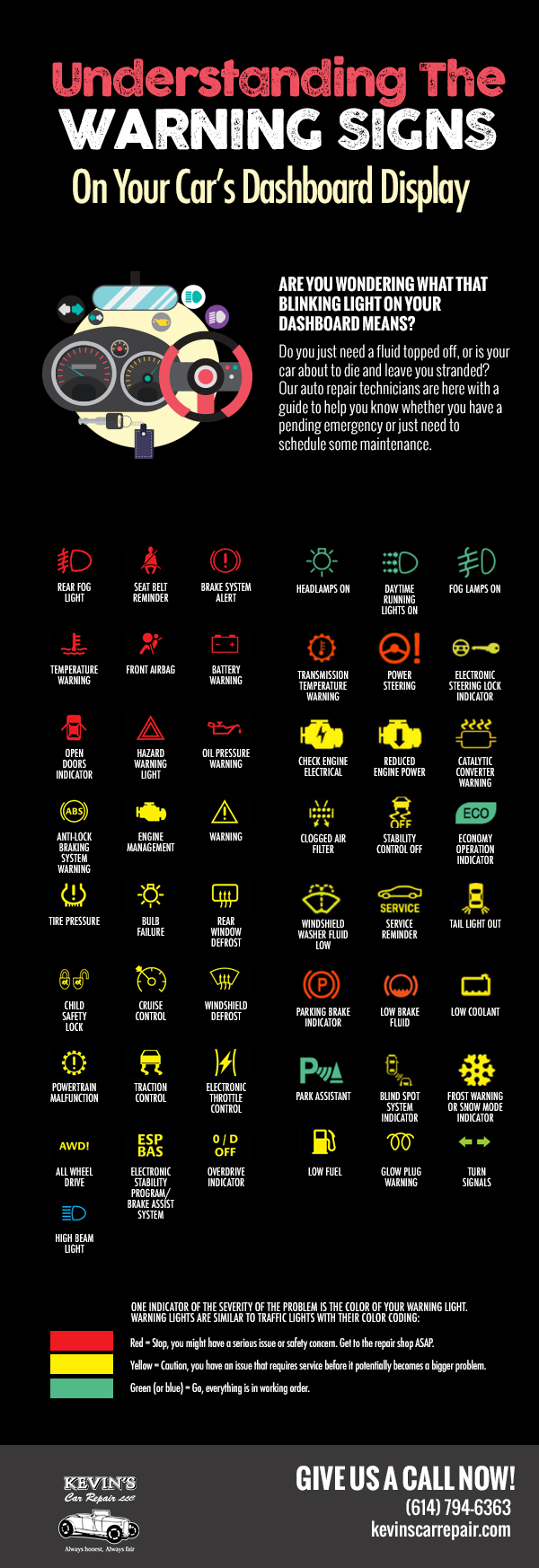Analyzing Your Automobile'S Caution Indicators: What They Actually Share
Analyzing Your Automobile'S Caution Indicators: What They Actually Share
Blog Article
Writer-Lim Dalgaard
When you lag the wheel, those radiant caution lights on your dashboard can be a little bit puzzling. Do you understand what they're trying to tell you concerning your car's health? Understanding the relevance of these lights is crucial for your safety and security and the longevity of your automobile. So, the following time one of those lights appears, wouldn't you want to analyze its message properly and take the needed steps to resolve it?
Common Caution Lights and Interpretations
Recognize common warning lights in your vehicle and understand their meanings to make certain secure driving.
The most common warning lights include the check engine light, which signifies concerns with the engine or discharges system. If this light comes on, it's essential to have your vehicle examined quickly.
The oil pressure warning light indicates reduced oil stress, requiring prompt attention to prevent engine damages.
A flashing battery light may suggest a defective billing system, potentially leaving you stranded otherwise addressed.
The tire pressure tracking system (TPMS) light alerts you to reduced tire stress, influencing automobile security and fuel performance. Ignoring this could bring about risky driving conditions.
The ABS light indicates an issue with the anti-lock stopping system, endangering your capability to stop quickly in emergency situations.
Lastly, the coolant temperature level advising light warns of engine overheating, which can lead to severe damages otherwise solved quickly.
Understanding these common warning lights will certainly aid you resolve concerns quickly and maintain risk-free driving problems.
Significance of Prompt Attention
Recognizing the usual warning lights in your automobile is only the first step; the relevance of immediately addressing these warnings can't be emphasized sufficient to guarantee your safety when traveling.
When a caution light illuminates on your dashboard, it's your cars and truck's method of communicating a possible issue that requires attention. Ignoring these cautions can lead to much more serious troubles later on, compromising your safety and possibly costing you extra in repairs.
Prompt focus to warning lights can stop breakdowns and mishaps. For instance, a blinking check engine light might show a misfire that, if left neglected, could create damage to the catalytic converter. Resolving car wrap auckland can save you from an expensive repair service.
In a similar way, a brake system alerting light may indicate reduced brake fluid or used brake pads, vital components for your security when driving.
DIY Troubleshooting Tips
If you observe a warning light on your dashboard, there are a couple of DIY repairing ideas you can attempt before seeking specialist assistance.
The primary step is to consult your auto's manual to recognize what the certain warning light indicates. Sometimes the problem can be as basic as a loosened gas cap activating the check engine light. Tightening up https://engineremapping62738.getblogs.net/63630761/observe-the-significant-fads-that-are-changing-the-landscape-of-automobile-fixing-especially-the-improvements-in-electrical-vehicles-and-the-application-of-artificial-intelligence may solve the issue.
Another typical concern is a reduced battery, which can trigger various cautioning lights. Inspecting the battery connections for corrosion and ensuring they're protected may repair the trouble.
If a warning light persists, you can attempt resetting it by separating the cars and truck's battery for a couple of minutes and after that reconnecting it. Additionally, checking your automobile's liquid levels, such as oil, coolant, and brake fluid, can assist repair advising lights related to these systems.
Final thought
In conclusion, comprehending your auto's warning lights is necessary for maintaining your car running efficiently and safely. By without delay resolving these alerts and recognizing what they indicate, you can avoid costly repair services and prospective breakdowns.
Keep in mind to consult your automobile's guidebook for certain details on each advising light and take action accordingly to guarantee a trouble-free driving experience.
Stay educated, stay risk-free on the road!
